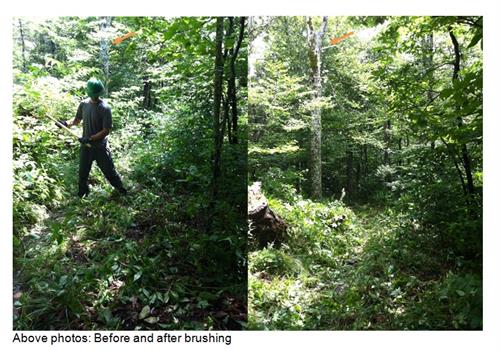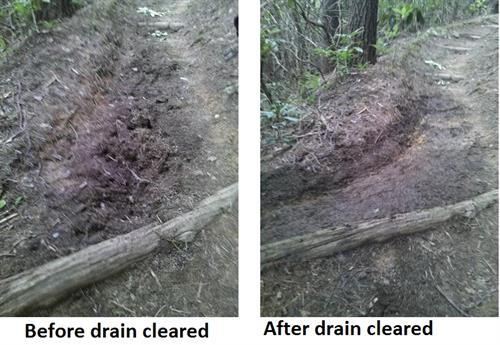by Natrieifia Miller
Flashback: Trail Musings from 1985
Bob Leone’s Trail Musings, was originally printed in The Register, November 1985.
“Maintenance: ATC receives reports from hikers each year describing maintenance conditions along a section of the Trail they have recently hiked. This year, there were a fair number of complaints with respect to poor blazing and clearing.
Ideally, there should be a minimum of four maintenance trips a year on a section of Trail. In the spring, maintainers should reblaze, clear blowdowns and clean out waterbars along their respective sections. Trail clearing should be scheduled in early June (in May further south), followed by a second clearing trip about six weeks later. Depending on the vegetation, some areas will not need this second cutting. Finally, in the fall, a trail rehabilitation trip should be scheduled to take care of erosion or drainage problems.”
Blazing
Blazes are 2×6” white markings to guide hikers on the Appalachian Trail.
One blaze should be placed about every five minutes of hiking time, about six per mile in each direction (800 to 1,000 feet apart)
Place blazes more frequently in confusing areas but never so that more than one blaze is visible ahead except at junctions, crossings, and in hard-to-follow sections.
Always make sure blazing surface is smooth and dry for best paint adhesion.
You can use a paint scraper to level the bark before you start to apply paint.
Avoid placing blazes on both sides of same tree
(Appalachian Trail Design, Construction and Maintenance pg 145-150)
Clearing & Cutting Vegetation
Slippage (when the weight of traffic collapses the sidehill bench and pushes it downhill) can result from inadequate clearing. Leaving vegetation growing on or above the cut bank of the bench, especially when wet, push hikers to the outside. Be sure to clear uphill side of the Trail for annual and woody growth and the downhill side of only woody growth to push hikers back to inside of the treadway.
(Appalachian Trail Design, Construction and Maintenance pg 98)

When cleaning clogged drainage channels, dig to bottom of the original channel and pull soil and debris downhill to pack into footpath below the waterbar. The extra material helps build up the treadway, bulk up berm (raised outside edge of the trail) that diverts water, or prevent the undermining of waterbars.
When cleaning a waterbar restore the ditch to half the depth of the bar so water doesn’t seep beneath and undermine it. Grade the apron (uphill side of the channel) to restore a shallow smooth slope.
(Appalachian Trail Design, Construction and Maintenance pg 136)

Trail Rehabilitation to Address Erosion
First, you have to see the problem: Hike along deteriorating sections in multiple weather conditions at periods of high use to gain a better understanding of hiker psychology, why they may be using the Trail in a damaging way.
Three useful techniques that are useful in treadway rehabilitation are reshaping the treadway, adding check dams, and using riprap (scree- rock piles) to direct hiker traffic.
(Appalachian Trail Design, Construction, and Maintenance pg 96-101)
